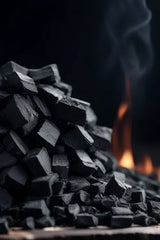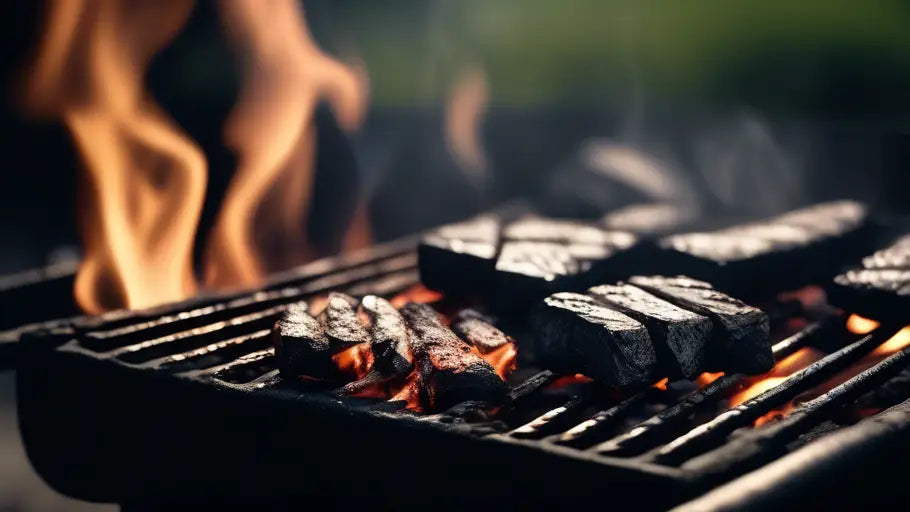Have you ever wondered what makes your favourite restaurant dishes so mouth-wateringly good? The secret lies in an ingredient that you may not have considered before: restaurant-grade charcoal. Yes, you read that right. Charcoal, not just any charcoal, but high-quality, restaurant-grade charcoal is the unsung hero enhancing the flavours of your dishes. The use of this top-notch charcoal in professional kitchens is a growing trend, and with good reason. In this article, we'll delve into the multiple benefits, the different types, and the best practices of using restaurant-grade charcoal.
Benefits of Restaurant-Grade Charcoal
Enhances Flavor and Aroma
Restaurant-grade charcoal offers an unparalleled smoky flavour that cannot be replicated by any other cooking method. This distinct flavour enhances the taste of grilled, roasted, or smoked dishes, taking them to a whole other level. Plus, the aroma of burning charcoal is a sensory delight that adds to the overall culinary experience. Can you imagine the sensory delight of savouring a perfectly grilled steak, its aroma wafting from the grill, thanks to the magic of restaurant-grade charcoal?
Provides Consistent Heat
One of the essential attributes of restaurant-grade charcoal is its ability to provide a steady and consistent heat source. This consistent heat is integral to achieving optimal cooking results. Whether it's searing a steak to perfection, slow cooking ribs, or maintaining a specific temperature, restaurant-grade charcoal has you covered.
Reduces Cooking Time
Thanks to the high heat generated by restaurant-grade charcoal, your cooking time is significantly reduced. This efficient cooking not only preserves the natural juices and tenderness of meats but also increases efficiency in professional kitchens. Who doesn't love a quicker turnaround on their succulent BBQ ribs?
Types of Restaurant-Grade Charcoal
Lump Charcoal

Lump charcoal, available in our lumpwood charcoal collection, is created by burning wood in a low oxygen environment. It boasts minimal additives and high carbon content, offering a natural and sustainable option for your grilling needs.
Briquettes
Briquettes, on the other hand, are made from a mixture of charcoal dust and small pieces of charcoal, bound together by a binding agent. They are famed for their consistent heat and longer burning time. So, if your recipe calls for extended cooking periods, briquettes may just be your new best friend.
Binchotan Charcoal

Originating from Japan, binchotan charcoal is a type of activated charcoal renowned for its high carbon content and long burning time. Traditionally used in Japanese cuisine, it's ideal for grilling delicate ingredients where precise temperature control is required.
Coconut Shell Charcoal
Coconut shell charcoal, made from the inner shell of a coconut, is a popular eco-friendly alternative. With its low ash content and high heat output, it's no wonder this type of charcoal is gaining popularity in grilling and smoking applications.
Best Practices for Using Restaurant-Grade Charcoal

Choosing the Right Charcoal
Selecting the appropriate type of restaurant-grade charcoal largely depends on your cooking method and the desired flavour. Consider the charcoal's origin, quality, certification, and, of course, your personal preference. Don't be afraid to experiment with different types of charcoal; it's all part of the culinary journey!
Preparing the Charcoal
Before you start cooking, you'll need to prepare your restaurant-grade charcoal. Techniques such as chimney starters and electric starters are a great way to get your charcoal ready. And remember, natural fire starters are always the best choice for lighting your charcoal.
Maintaining Temperature Control
Maintaining temperature control is crucial when cooking with charcoal. This can be achieved by adjusting the airflow, using vents, and arranging the charcoal for indirect cooking. Regular temperature monitoring is vital for achieving the best cooking results.
Cleaning and Storing Charcoal
After a successful cooking session, don't forget to clean up and store your restaurant-grade charcoal properly. Dispose of the ash and charcoal remnants safely. Remember, charcoal should always be kept dry and protected from moisture to preserve its quality.
Conclusion
To wrap up, restaurant-grade charcoal's benefits extend far beyond just lighting up your grills; it enhances the flavour, provides consistent heat, and reduces cooking time. With various types of charcoal available, such as lump charcoal, briquettes, binchotan charcoal, and coconut shell charcoal, you're sure to find the right fit for your culinary needs. Remember, the secret to a successful cooking session lies in choosing the right charcoal, preparing it correctly, maintaining temperature control, and cleaning and storing it correctly. So why not take your cooking to the next level and explore the world of restaurant-grade charcoal? You never know, it could be the secret ingredient you've been searching for!

